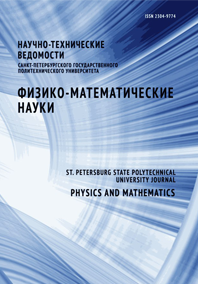Radiative energy losses of a high-current vacuum arc with an eroding anode
The results of measurements of the radiation power of a vacuum (p ~ 10‒4 Pa) arc in the near infrared, visible and ultraviolet regions of the spectrum (200 nm ≤ λ ≤ 1100 nm) are presented. The arc burned on industrial AMF-electrodes with a diameter of 55 mm. The material of the electrodes was the CuCr30 composition. The arc was fed by a current pulse in the shape close to half of the industrial frequency sine wave (f = 50Hz). The radiation was output through one of the side windows of the vacuum chamber. The window was made of quartz KU-1. The radiation receiver was a silicon photodiode with a diameter of 1.2 mm, located outside the vacuum chamber on an axis intersecting with the axis of symmetry of the discharge in the center of the interelectrode gap. The signal from the photodiode was taken through an amplifier and recorded on an oscilloscope. Considering the spectral sensitivity of the diode, two series of measurements were made: measurements without a filter and through a ZhS-10 yellow filter that cuts off radiation with λ ≤ 400 nm. The results obtained made it possible to analyze the dependence of the radiation power on the arc current at different stages of its development. The results showed that at high currents in the developed vacuum arc with anodic activity (eroding anode), a significant part (up to 15%) of the power released in the arc is transferred by radiation.


